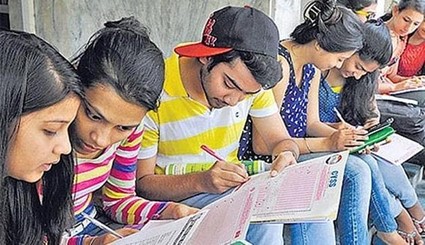By Ashish Gupta, Manas Fuloria and Vineet Gupta | Hindustan Times | April 17, 2019

A critique of engineering education in India suggests that much of it is theoretical with little exposure to industry. It is bucketed into old silos like “chemical engineering” or “mechanical engineering”, with limited opportunities for multi-disciplinary learning or real-world problem solving.
Circa 1700, India’s GDP was the highest in the world, higher than the combined GDP of Western Europe, higher than the GDP of China and the US. Then came the Industrial Revolution, when a large part of the world modernized and progressed at a rapid pace. India missed getting on this engineering and technology bandwagon.
Fast forward to 2019. After centuries of global advancements, India is at crossroads. We need to support the aspirations of 1.3 billion people, majority of them young and rapidly urbanizing and solve the grand challenges that our country and the world faces. Countries such as China and the US have created ecosystems (of which their higher educational system is a critical component) that helped them dominate the world in the 21st century. We should not miss the opportunity to create and nurture such ecosystems in India in the 21st century. Ironically, Indian colleges grant nearly a million engineering degrees annually, flooding the job market with a huge supply of engineers, with skills that have very little demand.
A critique of engineering education in India suggests that much of it is theoretical with little exposure to industry. It is bucketed into old silos like “chemical engineering” or “mechanical engineering”, with limited opportunities for multi-disciplinary learning or real-world problem solving.
If we are to take the fourth industrial revolution by the horns, the solution is not an incremental improvement in the current framework. We need to reimagine engineering education in India.
A recent report by MIT titled “The Global State of the Art in Engineering Education” states that the future leaders in engineering education will focus on “work-based learning, multidisciplinary programs and a dual emphasis on engineering design and self-reflection.” It lists three trends which will define the profile of leading programs. The first is the shift of the global axis of engineering leadership from high income countries to emerging economies.
The second trend is a move towards “socially relevant and outward facing engineering curricula” and the third trend is “the emergence of a new generation of leaders in engineering education that delivers integrated student centric curricula at scale”.
To be one of these leaders in engineering education, 45 industry leaders and entrepreneurs have come together to set up Plaksha University.
Plaksha is named after the tree from which the river Saraswati, synonymous with learning, originates. While the University will start in 2021 in Mohali, we are commencing the Plaksha Tech Leaders Fellowship in August 2019, in collaboration with University of California, Berkeley. The Fellowship exemplifies the next generation of innovative, experiential and technically deep masters level engineering curriculum.
Our vision for Plaksha is for it to be a movement. A movement that inspires many universities to be born or be transformed. We would like to put Indian higher education on the world map and also produce generations of students who will create impact by solving grand challenges and lead change through innovation and entrepreneurship.
(Ashish Gupta , Manas Fuloria and Vineet Gupta are co-founders of Plaksha University as well as Founder Benori Knowledge Solutions, CEO, Nagarro and MD Jamboree Education, respectively. Views expressed are personal)
This article was first published in Hindustan Times on April 17, 2019.



